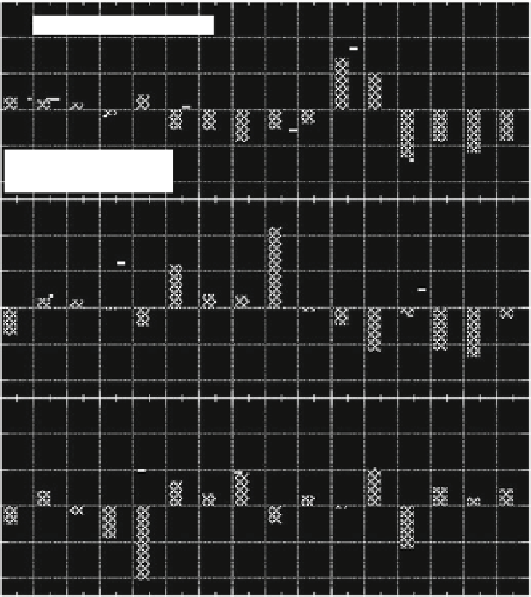Geoscience Reference
In-Depth Information
A. EIGENVECTOR #3
0.2
0
-0.2
TMP LOADINGS
B. EIGENVECTOR #6
0.2
0
-0.2
C. EIGENVECTOR #10
0.2
0
-0.2
Fig. 4.6
Climate eigenvectors Nos. 3, 6, and 10. These are shown to describe the modes of climate
that are most important in estimating the response functions of the seven tree species from near
Mohonk Lake. A cubic spline has been applied to each eigenvector, separately for the precipita-
tion (
solid bars
) and temperature (
hatched bars
) loadings, in order to highlight the more general
structure of each eigenvector. On-line version shows this figure in color
growth of the deciduous hardwoods. It has a significantly different pattern of
monthly climate loadings that emphasizes a tendency for both prior summer and
current spring precipitation to be jointly above or below average. It is unclear how
much of this structure is due to orthogonality constraints alone, but it appears to
be biologically meaningful nonetheless to the tree species being tested here. The
added importance of prior growing season rainfall to radial growth the following
year occurs even when autoregressive persistence has been removed from the tree-
ring chronologies (see Fig.
4.3b
for hemlock). Thus, this carryover effect of climate
on ring width, from one year to the next, is not related to autocorrelation per se.
Rather, it appears to be related to a discrete physiological event in a given year,
like foliar budset, whose effect on radial growth can be delayed one or more years.
Nonstructural carbon, which is an important component of bud construction and
early leaf development, may also play a role here, as it has a residence time up to







































































































































































































































































































































































